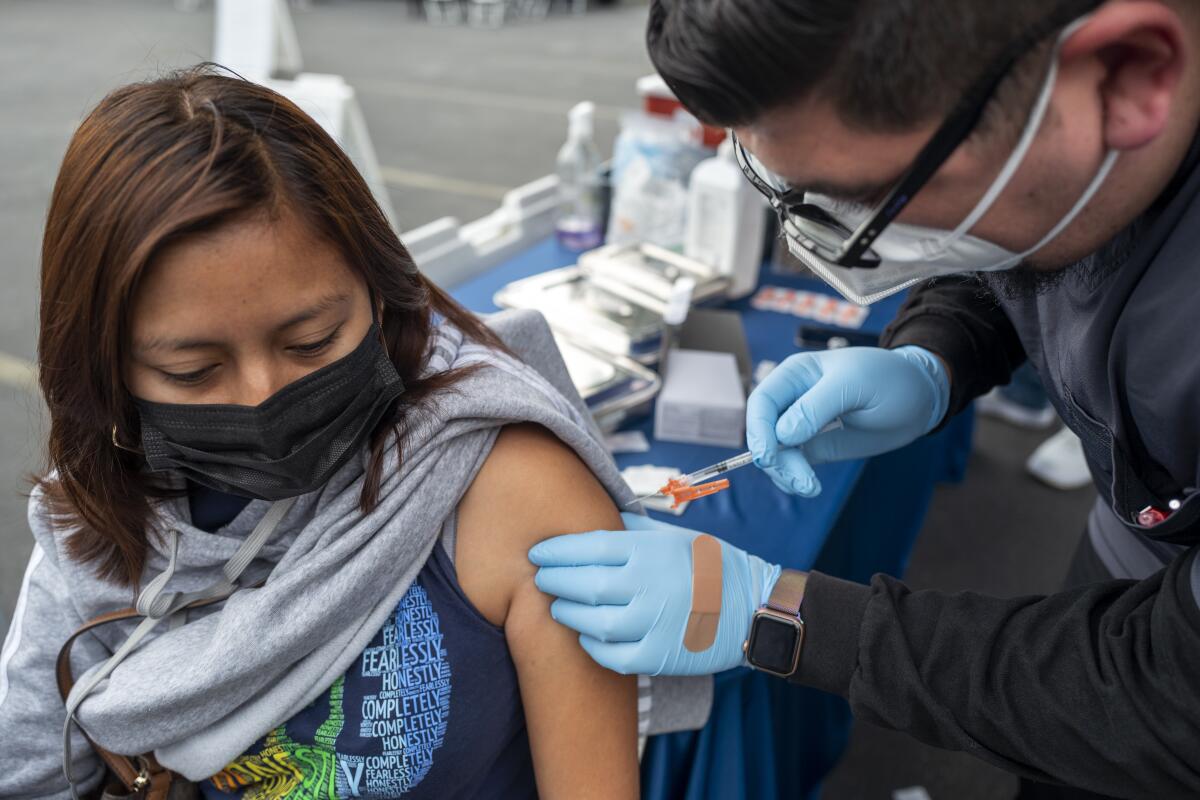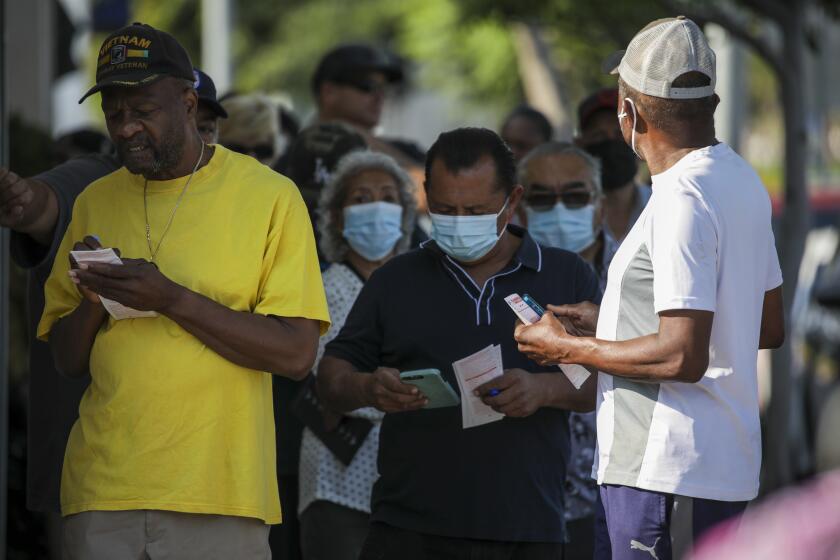Omicron subvariants BA.4.6 and BA.2.75 are here. How concerned should California be?

- Share via
As the latest coronavirus wave fueled by the super-infectious Omicron subvariant BA.5 continues to recede, health officials are turning a wary eye to what might come next.
Experts in California are closely tracking two newer subvariants, BA.4.6 and BA.2.75 — themselves members of the Omicron family. It isn’t clear whether they will eventually spread to worrisome extents in the state, but there’s reason to pay attention as they’ve caused concern elsewhere in the world.
The most pressing question is whether either can outcompete BA.5, which essentially elbowed out all other coronavirus strains during its stunning rise to dominance this summer. If they can, that could potentially point to another spin in an all-too-familiar cycle, where the emergence of an even-more-infectious strain threatens to trigger a fresh rise in cases.
“The evolutionary pressure on the virus is to find a way around the immunity wall that we have built up,” Dr. Ashish Jha, the White House COVID-19 response coordinator, said last week in a forum with the U.S. Chamber of Commerce.
The new booster ‘will become available by early to mid-September,’ if the FDA and CDC authorize shots, a top White House official said this week.
At this point, BA.5 is far and away the most common version of the coronavirus circulating in California and nationwide. It was estimated to constitute 89% of coronavirus cases nationwide for the week that ended Saturday, according to the U.S. Centers for Disease Control and Prevention.
However, the proportion of infections attributed to BA.4.6 has inched upward. That subvariant was estimated to constitute 6.3%of cases over the week ending Saturday, up from 5.6% the week before.
BA.4.6 isn’t a major player in the federally defined region that includes California, Arizona, Nevada, Hawaii and territories in the Pacific Ocean. In that region, BA.4.6 made up an estimated 2.4% of cases over the week ending Saturday. However, it constituted an estimated 15.9% of weekly cases in a central region of the country that includes Iowa, Kansas, Missouri and Nebraska.
Los Angeles County’s move from the high to medium level, underscoring the progress that prompted officials to drop plans for a renewed mask mandate.
Meanwhile, the BA.2.75 subvariant has attracted attention for becoming dominant in India and outcompeting BA.5 there, according to a tweet from Dr. Eric Topol, director of the Scripps Research Translational Institute in La Jolla.
“We’re now seeing signs it can also compete with BA.4.6 in Australia,” Topol wrote. “Just the fact that variants can outcompete BA.5 is of concern.”
And a preprint study from scientists in China suggested that BA.2.75 “may prevail” following the current BA.5 wave.
What this means for California and the U.S. is not clear.
There have been plenty of variants that have eventually fizzled out. And, as Topol wrote, the trajectory of a variant like BA.2.75 “may vary considerably between countries.”
The new booster ‘will become available by early to mid-September,’ if the FDA and CDC authorize shots, a top White House official said this week.
In Los Angeles County, there is little information to suggest either of these variants is growing dramatically. According to the most recent data, BA.4.6 constitutes just 1.5% of cases in L.A. County, a rate that remains relatively the same compared to the prior week.
There have been only three specimens of BA.2.75 identified cumulatively over a six-week period, “indicating no increased circulation of this sublineage in L.A. County,” said Public Health Director Barbara Ferrer.
“At the moment, as you can see, there are no subvariants or sublineages that are poised to circulate more widely in L.A. County than BA.5,” Ferrer said. “This is good news, as our recent history has linked a proliferation of new strains with increased transmissibility.”
But the reports from elsewhere regarding subvariants outcompeting BA.5 is worrisome, Ferrer said.
“I don’t know if there’s some relationship to the environment or the weather or particular conditions, including the vaccination status of the residents in those communities, as well as prior infections that folks have experienced,” she said. “It’s hard for us to really tease it all out from California here. I do know we need to watch it carefully.”
For now, though, both L.A. County and California as a whole are continuing to experience a pandemic reprieve — with sustained declines both in newly reported infections and the numbers of hospitalized coronavirus-positive patients.
“Given the significant decline in cases these past two weeks, and the absence of increased circulation of a new strain of the virus, we are optimistic that hospitalizations will continue to decline as well in L.A. County over the next two to three weeks,” Ferrer said.
More to Read
Sign up for Essential California
The most important California stories and recommendations in your inbox every morning.
You may occasionally receive promotional content from the Los Angeles Times.














